KETCHAN’s induction hardening machines are used in the hardening production process of steel or alloy parts in the manufacturing industry.
- Shafts: optical shafts, camshafts, crankshafts, roller tables, gear shafts, drive shafts, transmission shafts, brake shafts, rotors, worms, valves, pin shafts, stepped shafts, machine tool tops, couplings, spline shafts, Motor shaft
- Gears: Spur gears, helical gears, sprockets, racks, gears, internal gears, external gears, drive gears, bearings, bearing sleeves, taper sleeve connection plates
- Wheels: flywheel, guide wheel, lifting wheel, train wheel, saw blade
- Straight lines: guide rails, blades, files, saw blades, steel belts, concrete delivery pipes,
- Other categories: shift forks, machine tool chucks, universal joints, ball studs, workpiece end faces, workpiece grooves, jaws
We provides manual, semi-automatic, and automatic induction hardening systems for the above metal workpieces, as well as integrated turnkey induction hardening solutions including quenching, tempering, and annealing.
We are a manufacturer dedicated to providing professional induction hardening equipment that can improve the production efficiency and product process of steel surface quenching. Serving more than 1900 customers (including agents and end users) around the world for more than 20 years.
Induction Hardening Machines for Sale
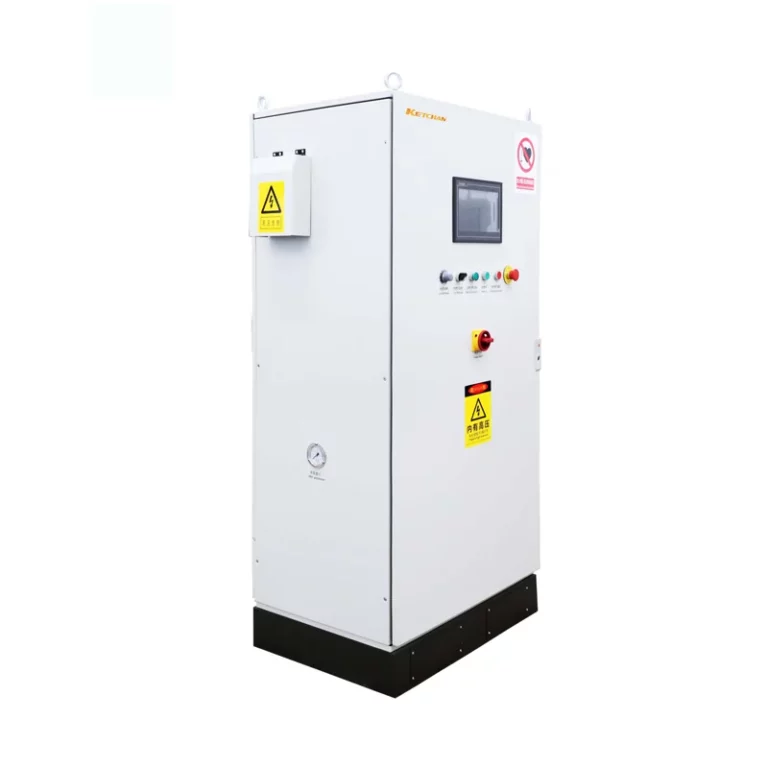
High Frequency Induction Hardening Machine
1 IGBT high frequency induction hardening machine
2 Wide frequency range fast heating speed
3 Temperature and time can be well controlled
4 Perfect
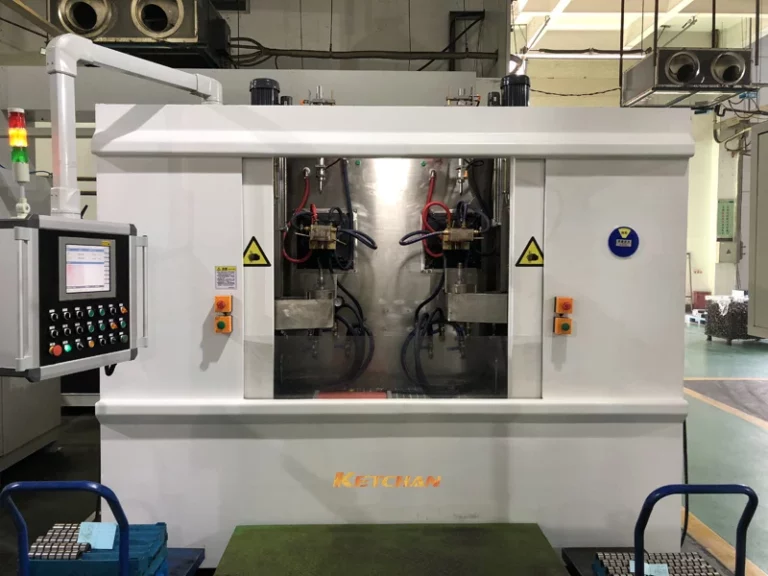
Shaft Induction Hardening Machine
1 Automated shaft induction hardening machine
2 Fast heating speed Less oxidation
3 Heating length speed temperature can control
4 Uniform hardening speed high
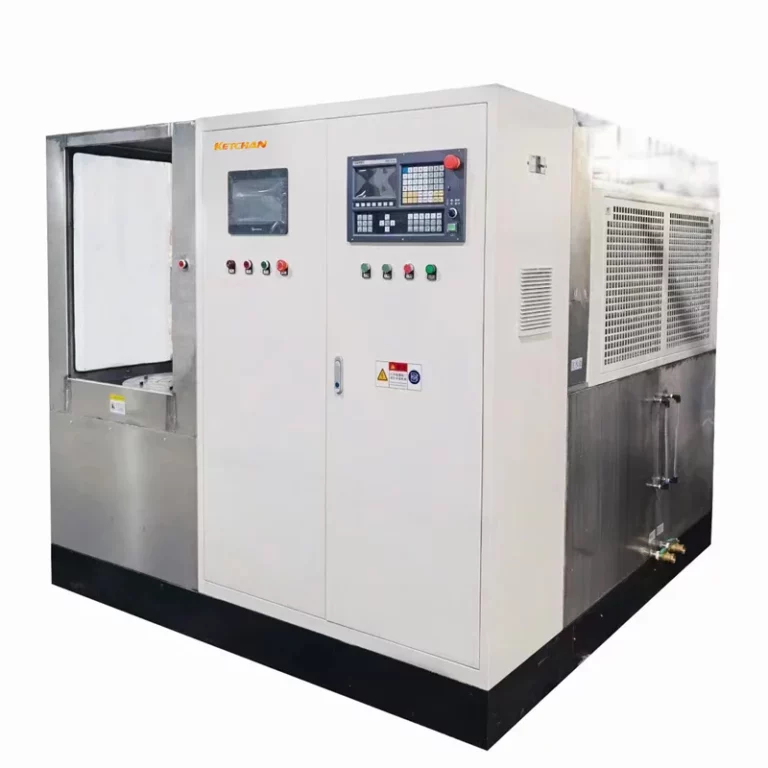
Ball Stud Induction Hardening Machine
1 Ball stud ball socket induction hardening machine
2 Customized 1 2 4 8 stations CNC hardening machine
3 Digital DSP induction heating power supply <br
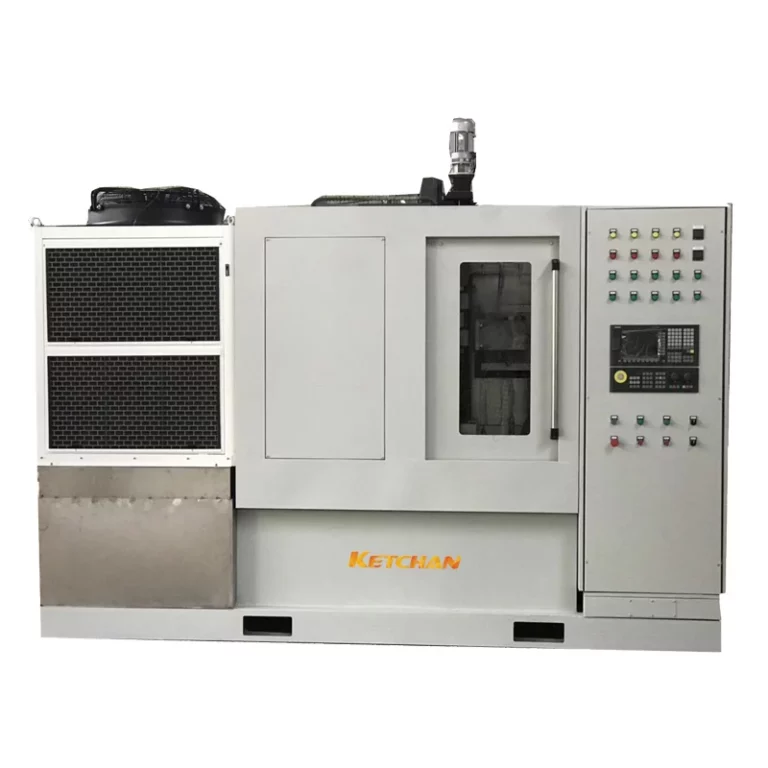
CNC Induction Hardening Machine
1 Turnkey CNC induction hardening machine
2 CNC program with Siemens Mitsubishi Fanuc
3 Imported ball screw servo motor drives
4 Customize 1 10
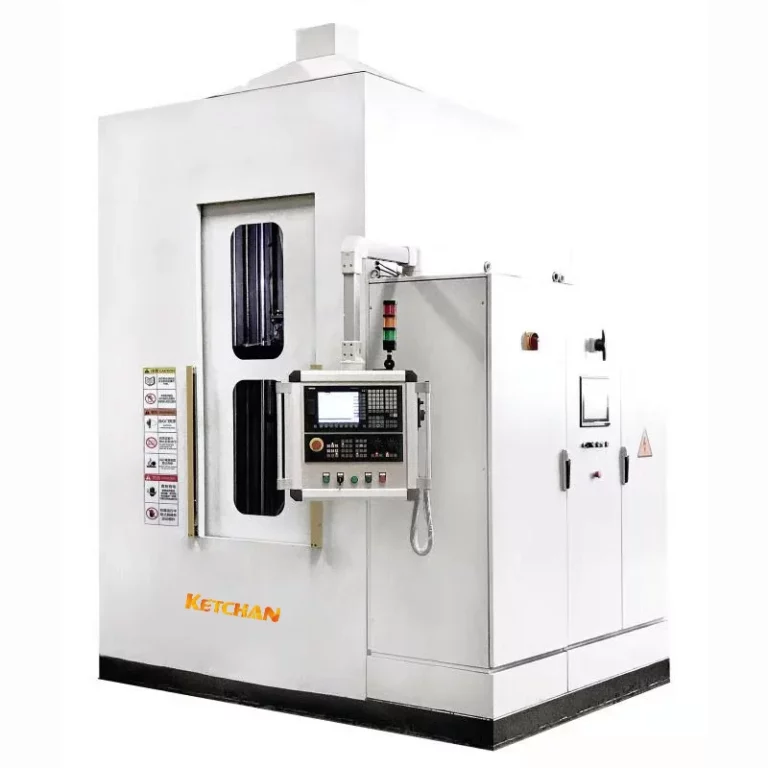
Vertical CNC Hardening Machine Tool
1 Vertical CNC hardening machine tool
2 Adopt Siemens CNC control system
3 High automation for mass production
4 Adopt hardening integrated design <br
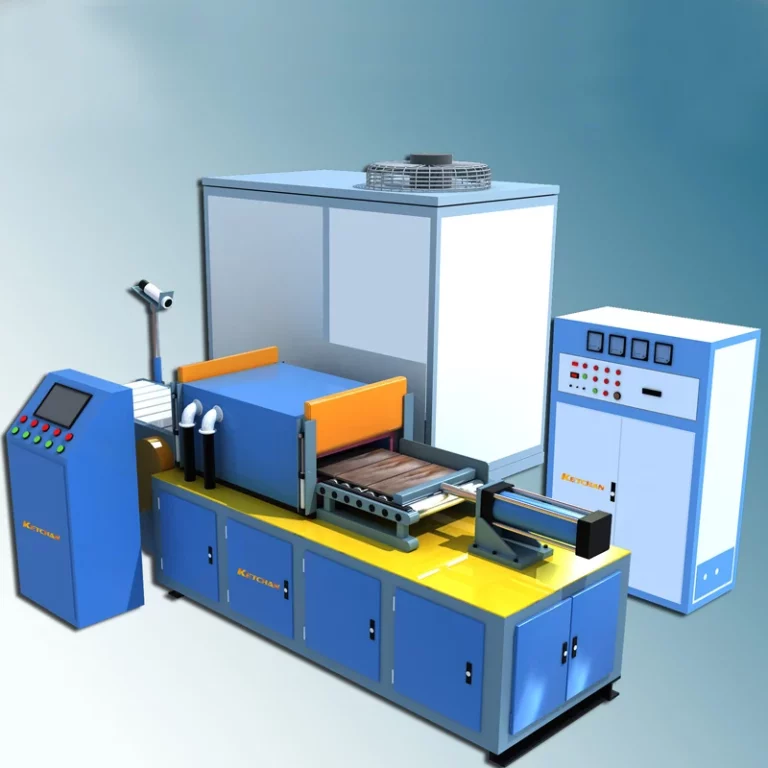
Horizontal Hardening Machine Tool
1 Automated horizontal hardening machine tool
2 Suitable for all kinds of shafts hardening cases
3 Complete induction hardening tempering process
4 With multi
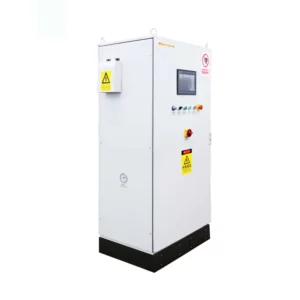
High Frequency Induction Hardening Machine
1. IGBT high frequency induction hardening machine.
2. Wide frequency range, fast heating speed.
3. Temperature and time can be well controlled.
4. Perfect self-protection alarm functions.
5. Uniform hardening result.
6. Customize different induction hardening coils.
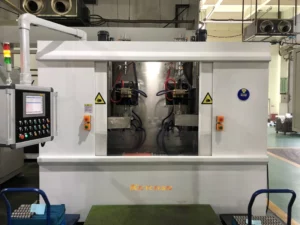
Shaft Induction Hardening Machine
1. Automated shaft induction hardening machine.
2. Fast heating speed, Less oxidation.
3. Heating length, speed, temperature can control.
4. Uniform hardening speed, high control precision.
5. Customize different induction coils.
6. More energy-saving, more green environment.
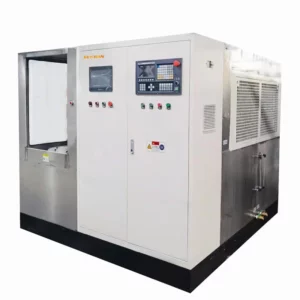
Ball Stud Induction Hardening Machine
1. Ball stud, ball socket induction hardening machine.
2. Customized 1/2/4/8 stations CNC hardening machine.
3. Digital DSP induction heating power supply.
4. Specially customized induction hardening coil.
5. Match with patented induction hardening transformer.
6. Complete ball pin induction hardening turnkey project.
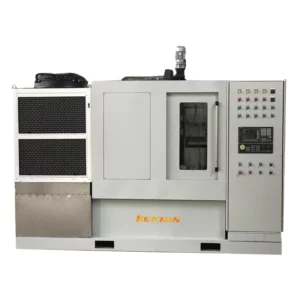
CNC Induction Hardening Machine
1. Turnkey CNC induction hardening machine.
2. CNC program with Siemens/Mitsubishi/Fanuc.
3. Imported ball screw, servo motor drives.
4. Customize 1-10 working stations.
5. Match process parameter monitoring system.
6. We are a direct supplier with CE, SGS.
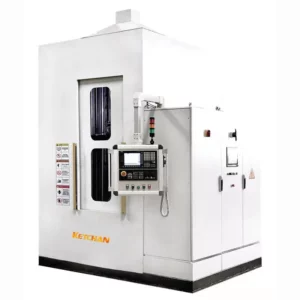
Vertical CNC Hardening Machine Tool
1. Vertical CNC hardening machine tool.
2. Adopt Siemens CNC control system.
3. High automation for mass production.
4. Adopt hardening integrated design.
5. Realize different hardening methods.
6. Customize 1-10 working stations.
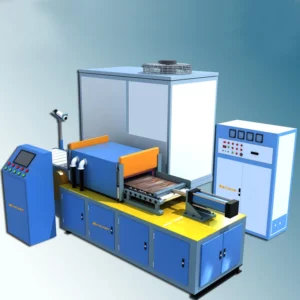
Horizontal Hardening Machine Tool
1. Automated horizontal hardening machine tool.
2. Suitable for all kinds of shafts hardening cases.
3. Complete induction hardening tempering process.
4. With multi-language famous CNC system.
5. Provide free induction heat treatment process.
6. Support oversea service,24 hours working.
Free technical advice. The experienced engineering team is ready for you!
Machine Features
- Integrated design of induction heating power supply and hardening machine tool. Smaller footprint and simple piping.
- The lifting of parts and the forward and backward movement of the transformer are driven by servo motors, driven by ball screws, and the moving position is precisely controlled to 0.1mm.
- CNC system control, keyboard input, storage of quenching program, automatic control of working program.
- The programmable process is easy to adjust, easy to operate, and has perfect protection and alarm functions. System language can be switched.
Optional Equipment
- Medium frequency induction heating power supply, high frequency or ultra-high frequency induction heating power supply.
- Customized induction hardening coils
- Quenching spray ring
- Single station, double-station or disc multi-station tooling
- Water cooling system for quenching and induction heating power supply
- Conveying device, clamping mechanical arm, pneumatic clamping device.
- Infrared temperature control system
- Induction heating condition monitoring system can display, record, and store induction heat treatment process parameters in real-time.
Induction Hardening Machines Applications
- Hardening and tempering of steel or other alloy parts to increase their strength and service life. For example, induction hardening can be used to harden surgical blades, seat belt parts, saw blades, fittings, screws, gears, cam assemblies, armature shafts, pulleys, knife blades, etc.
- Hardening the surface or selected regions of mechanical parts and automobile parts to improve their wear resistance and performance. For example, induction hardening can be used to harden powertrain components, suspension components, engine components, stampings, CVJ quenching parts, valve parts, hub bearing parts, motor rotors of electric vehicles, etc.
- Hardening the surface or selected regions of metal parts with complex shapes or geometries to achieve uniform hardness and quality. For example, induction hardening can be used to harden motorcycle gears, screw threads, marking stamps, etc.
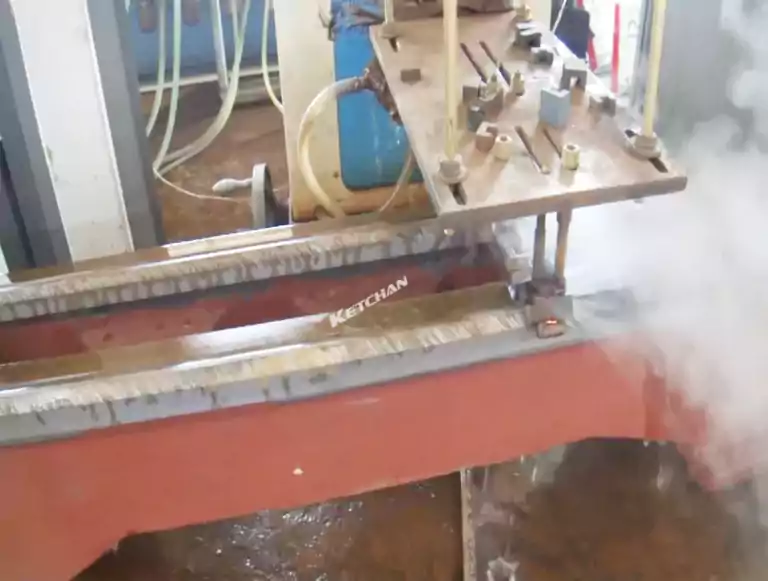
Induction Hardening of Rail
There are different methods of hardening the surface of the metal track, depending on the type of metal, the desired hardness, and the equipment available. Some of the common methods
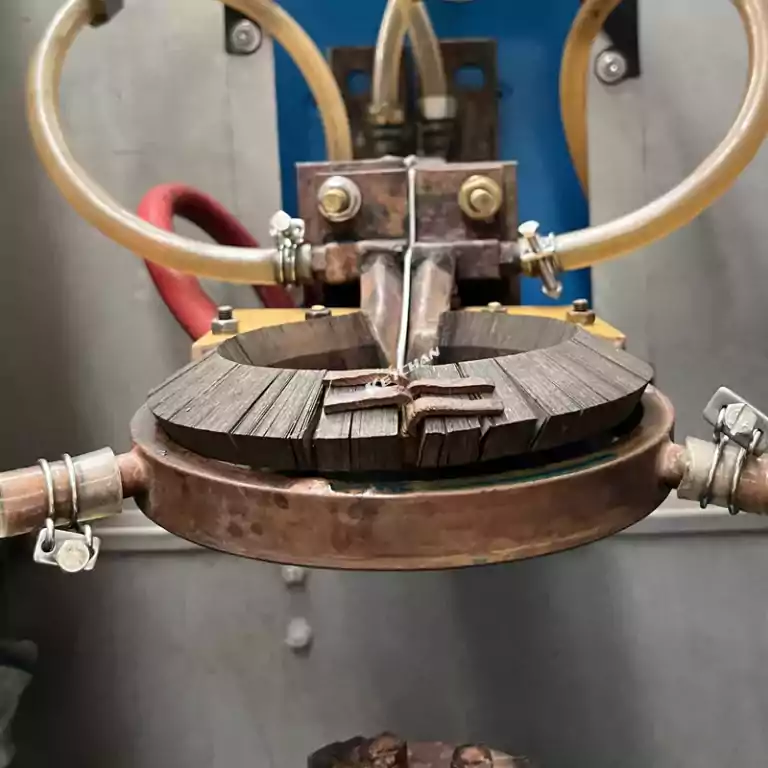
Induction Hardening of Earthmoving Machine Bush
Induction hardening of Earthmoving Machine Bush is a process that uses induced heat and rapid cooling to increase the hardness and durability of steel parts used in earth-moving equipment1.
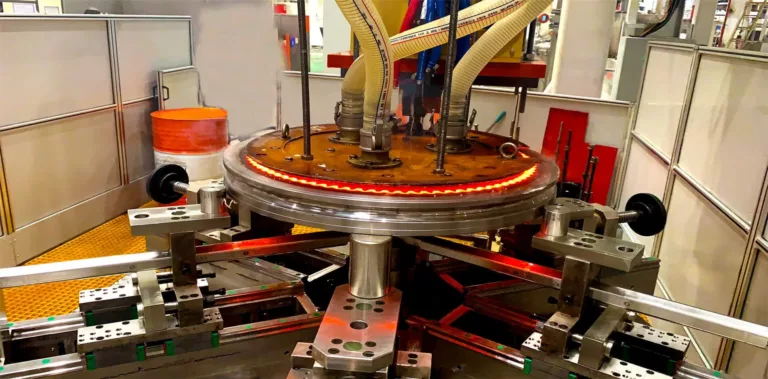
Induction Hardening Process Guidance
KETCHAN’s Induction Heating Machine Frequency Range: 1 kHz-600 kHz Get Machine Price Induction hardening is a type of surface hardening in which a metal part is heated by an alternating
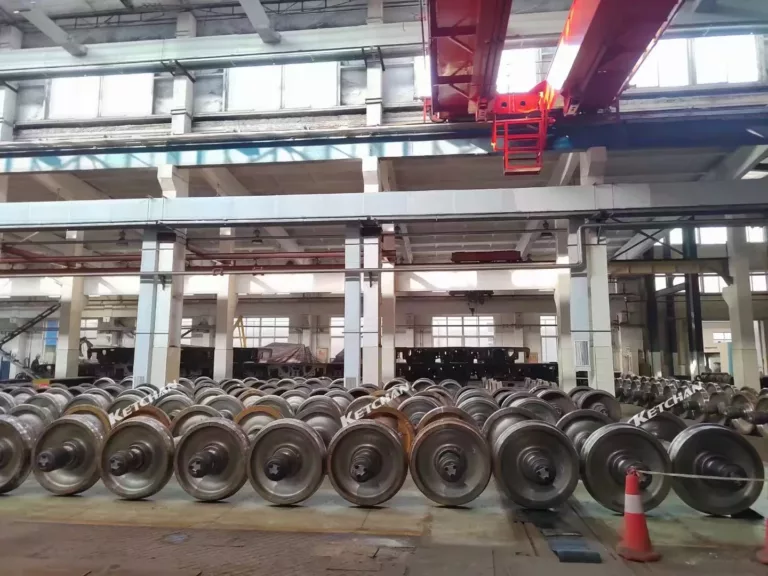
Induction Hardening of Wheels
Induction hardening of wheels is a process of heating and quenching the surface of gear wheels to increase their hardness and wear resistance. Induction heating utilizes an electromagnetic field to
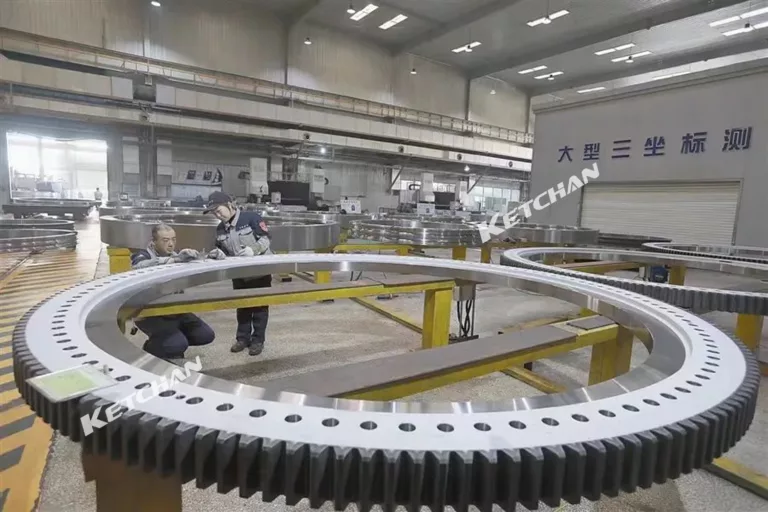
Wind Power Generator Bearing Induction Hardening
CNC Hardening Machine Tool for Wind Power Generator Bearing The large bearings in wind power generators are the key components in the design of wind turbines. The hardening quality of

Electric Vehicle Induction Heating & Hardening & Brazing
Electric Vehicles and Induction Heating In the past few years, people’s demand for electric vehicles has increased significantly, and electric vehicles have become a new track pursued by major
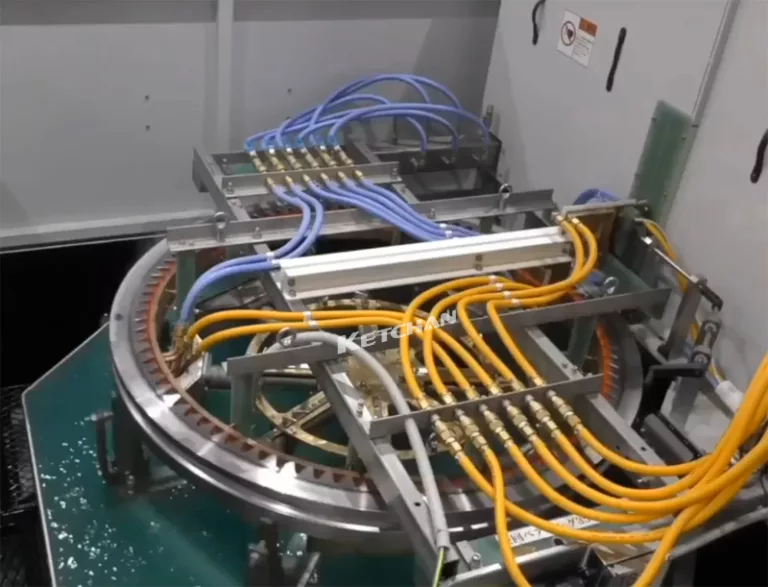
Dual Frequency Induction Hardening of Gears
The principle of dual-frequency induction heating Conventional (traditional) dual-frequency induction hardening is that two frequency power supplies are applied to two inductors respectively, and the gear needs to be preheated
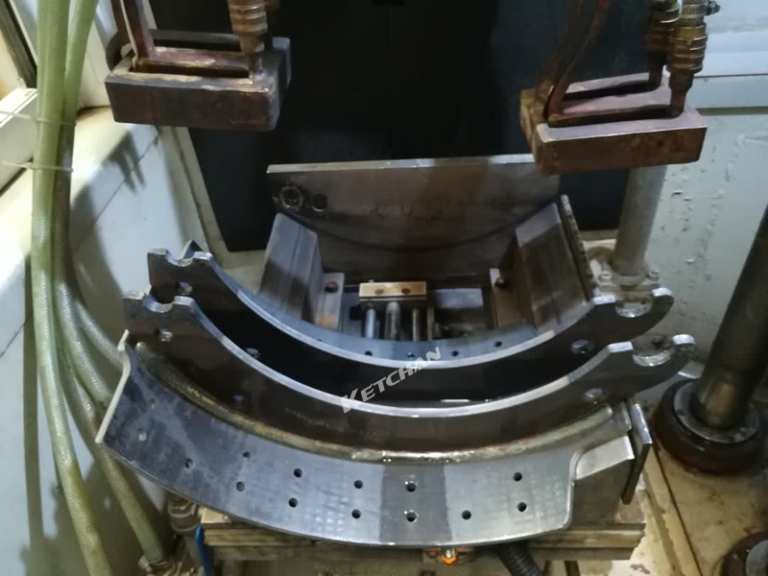
Induction Hardening Automobile Components
https://www.youtube.com/watch?v=w3wKmfnNGs8 Parts can reflect the extent of induction hardening of an average car. Induction hardening of constant-speed links (sleeves and cylinders for front-drive sedans), axles and rear axle drive
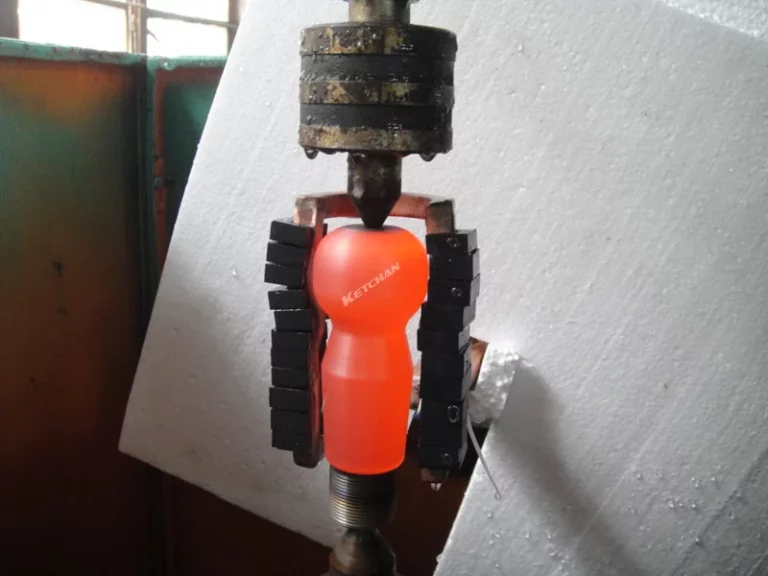
Ball stud and ball socket induction hardening machine
The main function of the ball stud is to realize the up and down movement of the wheel and the steering movement. The ball stud is an important security
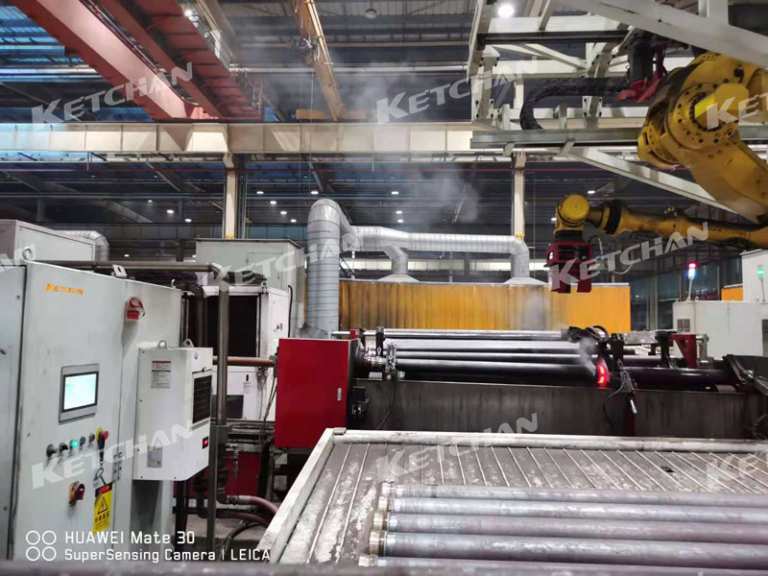
Concrete Pump Tube Inner Surface Hardening Machine
1. Digital concrete pump pipe inner surface induction hardening.
2. Customized tube inner hole induction hardening system.
3. Induction heating hardening pipe length upto 3.5m.
4. Fast heating speed, energy-saving a lot.
5. It is a turnkey pipe induction hardening project.
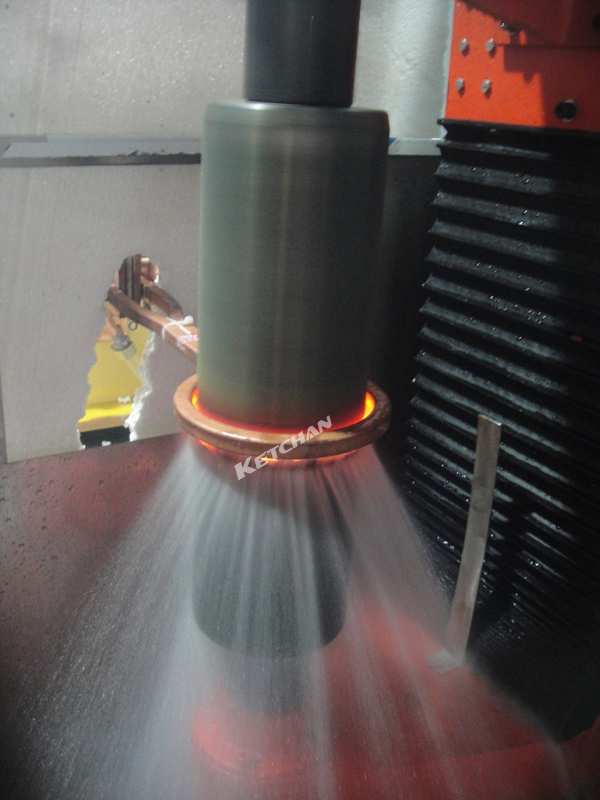
Induction Hardening of Shaft
Applications: In the workpiece subjected to alternating loads such as torsion and bending, the surface layer is required to withstand higher stress or wear resistance than the core, and
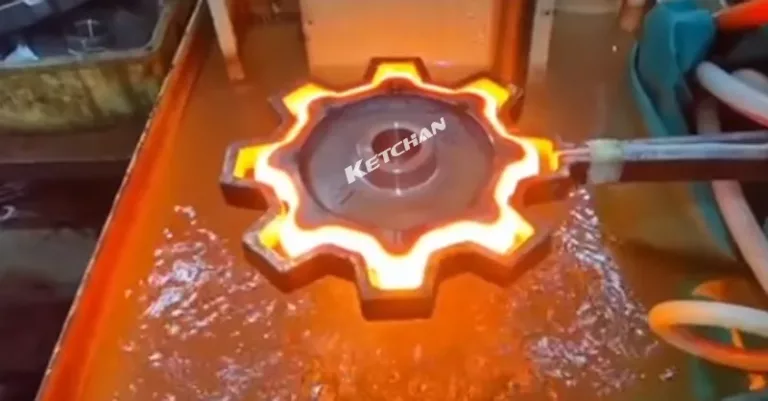
Induction Hardening Equipment
Induction hardening equipment is a heating system used for surface hardening and through hardening of mechanical parts using the principle of induction heating. Induction heating allows heat to apply on
Industries
Induction hardening machines are devices that use the principle of electromagnetic induction to heat and harden the surface of metal parts. They are widely used in various industries, such as automotive, machine, and tool manufacturing, to improve the wear resistance and durability of components. Induction hardening machines can perform different types of hardening processes, such as quenching and tempering, static hardening, or scan hardening, depending on the shape, size, and material of the workpiece. Induction hardening machines have many advantages over other methods of hardening, such as faster heating, precise control, minimal distortion, no surface decarburization, and fine-grain microstructure.

Induction Heating Solutions for Auto Parts
Advantages and Disadvantages of Induction Heat Treatment Auto Parts Induction heat treatment is a process that uses electromagnetic fields to heat metal parts or components without direct contact. It is
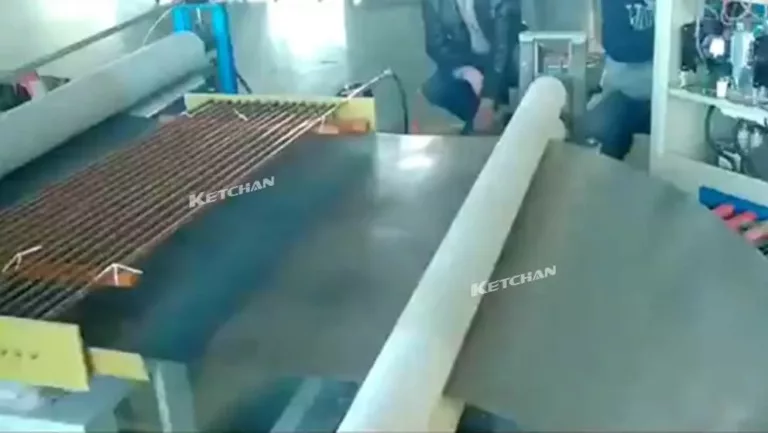
Induction Heating of Composite Materials
Induction heating is a technology that uses an alternating electromagnetic field to heat ferromagnetic and conductive materials and has been adapted to polymeric materials and composites in the past
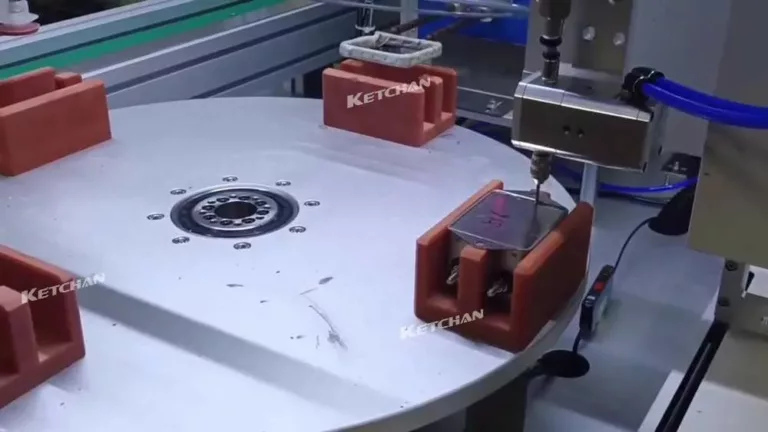
What can Induction Heating Technology Do for the 5G Industry?
Induction heating technology can potentially provide benefits for the 5G industry in terms of manufacturing, testing, and repairing 5G components and devices. Such as: Manufacturing of 5G components and

Electric Vehicle Induction Heating & Hardening & Brazing
Electric Vehicles and Induction Heating In the past few years, people’s demand for electric vehicles has increased significantly, and electric vehicles have become a new track pursued by major
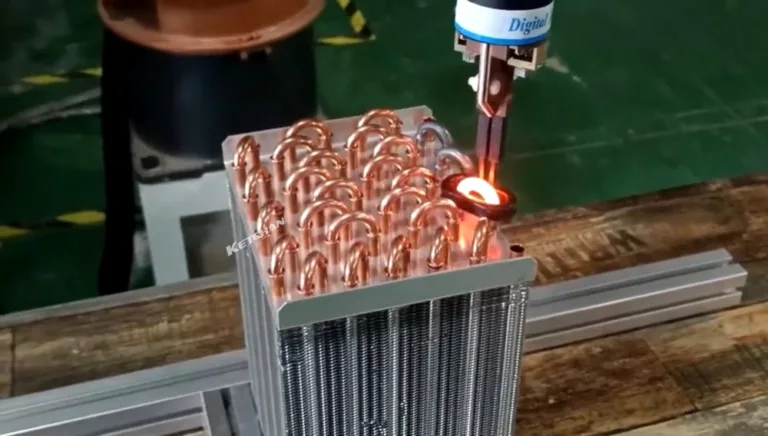
Induction Soldering Precision Solutions
What is induction soldering? Induction soldering works by using a precise electromagnetic field to heat two or more electrically conductive materials in order to join them with a filler
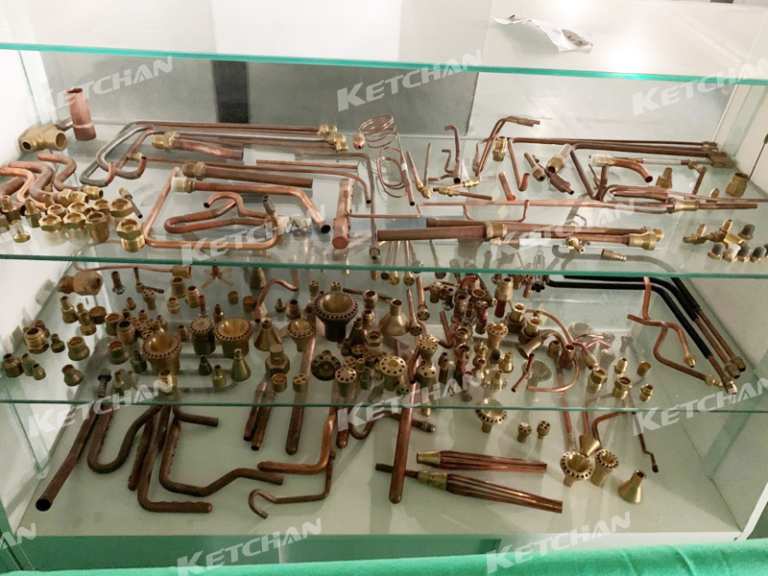
Induction Brazing Solutions For HVAC Industry
Composition of air conditioning accessories Air conditioning accessories include circuit control boards, wire controllers, manifolds, refrigerants, electronic expansion valves, motors, compressors, liquid mirrors, and ball valves. High-frequency induction brazing technology
FAQ
Which metal can be induction hardened?
Induction hardening can be applied to various metals, such as steel, cast iron, stainless steel, aluminum, copper, brass, and titanium. However, not all metals can be quenched with the same quenching medium or method. The choice of quenching medium depends on the type, composition, and shape of the metal, as well as the desired hardness and microstructure. Some common quenching media are water, oil, air, polymer solutions, or inert gases.
How to choose the frequency of induction heating power supply for hardening process?
The frequency of induction heating power supply for hardening workpiece is an important parameter that affects the heating depth, efficiency, and quality of the induction hardening process. The frequency selection depends on several factors, such as the shape, size, material, and hardness requirement of the workpiece, the type and design of the induction coil, the power and time of the heating cycle, and the cost and availability of the equipment.
Generally speaking, the higher the frequency, the shallower the heating depth, and vice versa. Therefore, for workpieces that require shallow hardening, such as thin or small parts, high-frequency power supplies are preferred. For workpieces that require deep hardenings, such as thick or large parts, low-frequency or medium-frequency power supplies are more suitable. However, other factors also need to be considered, such as the skin effect, the eddy current distribution, the magnetic permeability, and the electrical resistivity of the workpiece material. These factors affect the penetration depth and heating uniformity of the induction current.
The frequency selection also depends on the type and design of the induction coil. The coil is a crucial component of the induction hardening system, as it determines the shape and distribution of the magnetic field that induces the current in the workpiece. The coil should be matched with the frequency and power of the power supply to achieve optimal efficiency and performance. The coil should also be shaped to fit the contour of the workpiece to ensure uniform heating and hardening. For complex geometries, such as gears or shafts, special coils may be required to achieve precise hardening patterns.
The power and time of the heating cycle are also important factors for frequency selection. The power and time determine the amount of heat delivered to the workpiece and affect the hardness depth and quality. The power and time should be adjusted according to the frequency and material of the workpiece to achieve the desired austenitization temperature and quenching rate. Generally, higher frequencies require higher powers and shorter times, while lower frequencies require lower powers and longer times. However, too high power or too short a time may cause overheating or cracking of the workpiece surface, while too low power or too long a time may cause insufficient hardening or excessive distortion.
The cost and availability of the equipment are also practical considerations for frequency selection. Different frequencies require different types of power supplies and coils, which may vary in price and availability. Higher frequencies usually require more expensive and sophisticated equipment than lower frequencies. Therefore, the frequency selection should also take into account the budget and resources of the user.
To summarize, there is no single optimal frequency for induction hardening workpiece. The frequency selection should be based on a detailed analysis of various factors and criteria that affect the induction hardening process. Some general guidelines for frequency selection are:
- For shallow hardening (less than 1 mm), use high-frequency power supplies (above 50 kHz).
- For medium hardening (1-3 mm), use medium-frequency power supplies (10-50 kHz).
- For deep hardening (more than 3 mm), use low-frequency power supplies (below 10 kHz).
- For complex geometries or precise patterns, use special coils or scan hardening techniques.
- For high production rate or quality, use high power and short time.
- For low cost or availability, use low power and long time.
How to choose the right induction hardening machine?
Choosing the right induction hardening machine depends on several factors, such as the type, size, shape, and material of the workpiece, the desired hardness pattern and depth, the production rate and quality, and the budget and availability of the equipment. Here are some general guidelines to help you choose the right induction hardening machine for your application:
- Determine the induction hardening method: Depending on the geometry and size of the workpiece, you can choose between different induction hardening methods, such as spin hardening, tooth-by-tooth hardening, gap-by-gap hardening, or tip-by-tip hardening. Spin hardening is suitable for small or medium-sized gears that can be encircled by an induction coil and rotated at high speed. Tooth-by-tooth hardening is suitable for large or complex gears that require precise control of the heating and quenching cycle for each tooth. Gap-by-gap hardening is a variation of tooth-by-tooth hardening that heats and quenches a gap between two teeth at a time. Tip-by-tip hardening is another variation of tooth-by-tooth hardening that heats and quenches only the tip of each tooth.
- Select the induction heating power supply: The induction heating power supply is the device that generates the alternating current that flows through the induction coil and creates the electromagnetic field that heats the workpiece. The power supply should match the frequency, power, voltage, and current requirements of the induction coil and the workpiece. The frequency selection depends on the heating depth and uniformity, the material properties, and the coil design of the workpiece. Generally, higher frequencies produce shallower heating depths and lower frequencies produce deeper heating depths. The power selection depends on the heating time and temperature, the material properties, and the coil design of the workpiece. Generally, higher powers produce faster heating rates and higher temperatures.
- Choose the induction coil: The induction coil is the component that surrounds or contacts the workpiece and transfers the electromagnetic energy to it. The coil should be designed to fit the shape and size of the workpiece and to create a uniform magnetic field around it. The coil should also be water-cooled to prevent overheating and damage. The coil design affects the efficiency and performance of the induction hardening process.
- Select the quenching medium: The quenching medium is the substance that cools down the heated workpiece and creates a hardened martensitic structure on its surface. The quenching medium should be chosen according to the type, composition, and shape of the workpiece, as well as the desired hardness and microstructure. Some common quenching media are water, oil, air, polymer solutions, or inert gases. Each quenching medium has different cooling rates and effects on the workpiece.
- Consider other optional equipment: Depending on your specific application and needs, you may also consider adding some optional equipment to your induction hardening machine, such as custom induction coils, foot switch, custom flexible cables, cooling water system, automatic loading and unloading system, conveyor system, or PLC remote control system. These optional equipment can enhance your production efficiency, quality, convenience, or safety.
